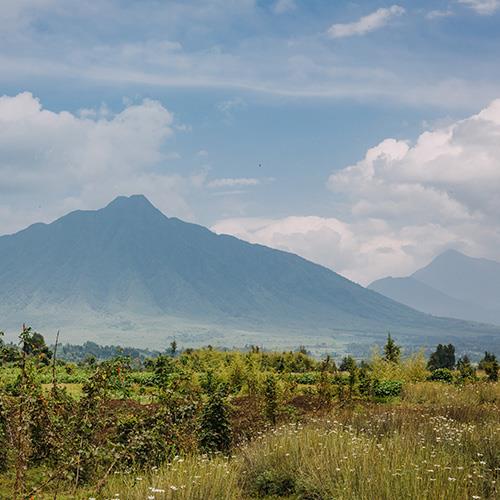EXPERIENCE CHOBE NATIONAL PARK



Overview
Chobe National Park is the first national park in Botswana and the most biologically diverse, it is the country’s third-largest park after Central Kalahari Game Reserve, and Gemsbok National Park. The sparkling deep blue waters of the Chobe River wind through the park’s sandy terrain which is home to a wide variety of wildlife including a population of lions that prey on elephants, mostly calves or juveniles, but also subadults.
The surrounding landscapes are filled with colorful quaint towns, lush floodplains, verdant dense forests filled with mopane trees, and endless woodlands. The park is named after this magnificent majestic river. The park is home to bustling wildlife and is famed for its enormous elephant population, large herds of buffalo, and incredible birdlife. The Chobe Riverfront is the most accessible part of the park, and also where visitors can the largest concentration of wildlife. No matter where you go in this spectacular park you will encounter plenty of wildlife.
Bushmen were the park’s original inhabitants followed by the impressively named Hambukushu, Bayei, and Basubiya. The famed explorer David Livingstone passed through the area during the 1850s on his way to Victoria Falls. The area was protected as a game reserve in 1961 and then proclaimed as a national park in 1968. The game density in the park is exceptionally high and the park covers an area of 4,500 square miles. It is a GANP Ambassador Park. There are four distinct ecosystems within the national park, which creates four unique areas of the park for safari travelers to explore.
These four main areas are made up of the Serondela area often referred to as the Chobe riverfront, and Victoria Falls where elephants, African Buffalo, giraffes, sable, water monitors, hippopotamus, crocodiles, and a wide variety of birds are commonly seen. The Savuti Marsh is where cheetah, lion, Kudo, warthog, impala, zebra, wildebeest, elephant, and rhinoceros are spotted and the Linyati Marsh is blanketed with riverine woodlands and open woodlands where the wild dog, roan and sable antelope roam.





Things to see and do
A safari trip to Chobe National Park is one of the most popular reasons to visit the area. The park is packed with incredible wildlife and provides a once-in-a-lifetime experience for visitors. A Chobe safari is the perfect way to spot thousands of animals in large herds that come to seek the permanent waters of the Chobe and Linyanti Rivers during the dry season. Chobe’s big game includes zebra, impala, baboon, blue wildebeest, kudu, giraffe, warthog, vervet monkey, lions, hyenas, buffalo, hippos, crocodiles and leguvaan. Cheetahs, leopards, and Africa’s rare wild dog also roam the park area but are seen less frequently.
A typical safari day starts bright and early from your camp or lodge accommodation and then heads inside Chobe National Park on a 4x4 jeep safari tour, a walking safari tour, or a river safari cruise. These tours are conducted by knowledgeable guides who have a wealth of experience with the land and the wildlife inside the park. You might be lucky enough to spot the famous “Big Five” safari animals and also have the opportunity to spot Chobe’s fascinating nocturnal wildlife like aardvarks, porcupines, and bushpigs on a night drive.
Chobe National Park is famed for its massive elephant herds, there are around 120,000 elephants living within the park's boundaries. Herds of buffalos can be just as big as well as a healthy population of lions.
Taking a boat for a cruise on the Chobe River is a unique way to see wildlife from a different perspective. Many operators offer these tours and last for around 3 hours ending around sunset. There are small (6-people) boats and large double-decker boats to choose from. Cruisers can spot kingfishers, a high density of fish eagles, and African skimmers, and be on the lookout for bee-eaters, hamerkops, and wire-tailed swallows. On the borders of the island and the Chobe, floodplains are where storks, geese, herons, and many plovers can be seen.
Take a day trip to the magnificent Victoria Falls. A full-day tour begins at 7 am with the first stop being at the border crossing into Zimbabwe. Once you arrive at the falls there will be two hours available for exploring, it is around a ½ mile walk to get a closer view of the magnificent falls. It is also possible to walk to Victoria Falls Bridge which crosses the Zambezi River in Zambia, there are many adventure activities across the bridge including Bungee Jumping, White Water Rafting, Canoe Trips, and Helicopter rides over the falls. Enjoy lunch at Lookout Cafe.
Chobe National Park is a popular tourist destination for bird lovers it has one of the greatest concentrations of wildlife found across the entire continent. There are over 460 different species of birds to spot on land or in the water. Visitors can expect to see Fish Eagle, Marital Eagle, Kingfisher, Pel’s Fishing Owl, Egyptian Geese, Sacred Ibis, and all of the rollers. Catch-and-release fly or spinner rod fishing can also be enjoyed on teh river where fishermen can expect to catch bream, tilapia, catfish, and the elusive tigerfish.
Go on a village tour and learn about the fascinating culture and heritage of the region and meet the wonderful residents. These tours allow visitors to experience the rich traditions of the land and discover some local customs and rituals. Sail across the Chobe River in a traditional wooden makoro canoe, and then journey on foot to some of the tribal villages on the Namibian side of the bank.
During the dry season in Chobe National Park, the water and vegetation become sparse. Elephants, buffalo, and predators make their trek to the river in the hundreds in search of hydration. This time of year makes for some of the best game viewings in southern Africa. Sunrises and sunsets along the Chobe River are some of the greatest times to view wildlife and make some fantastic opportunities for photography.